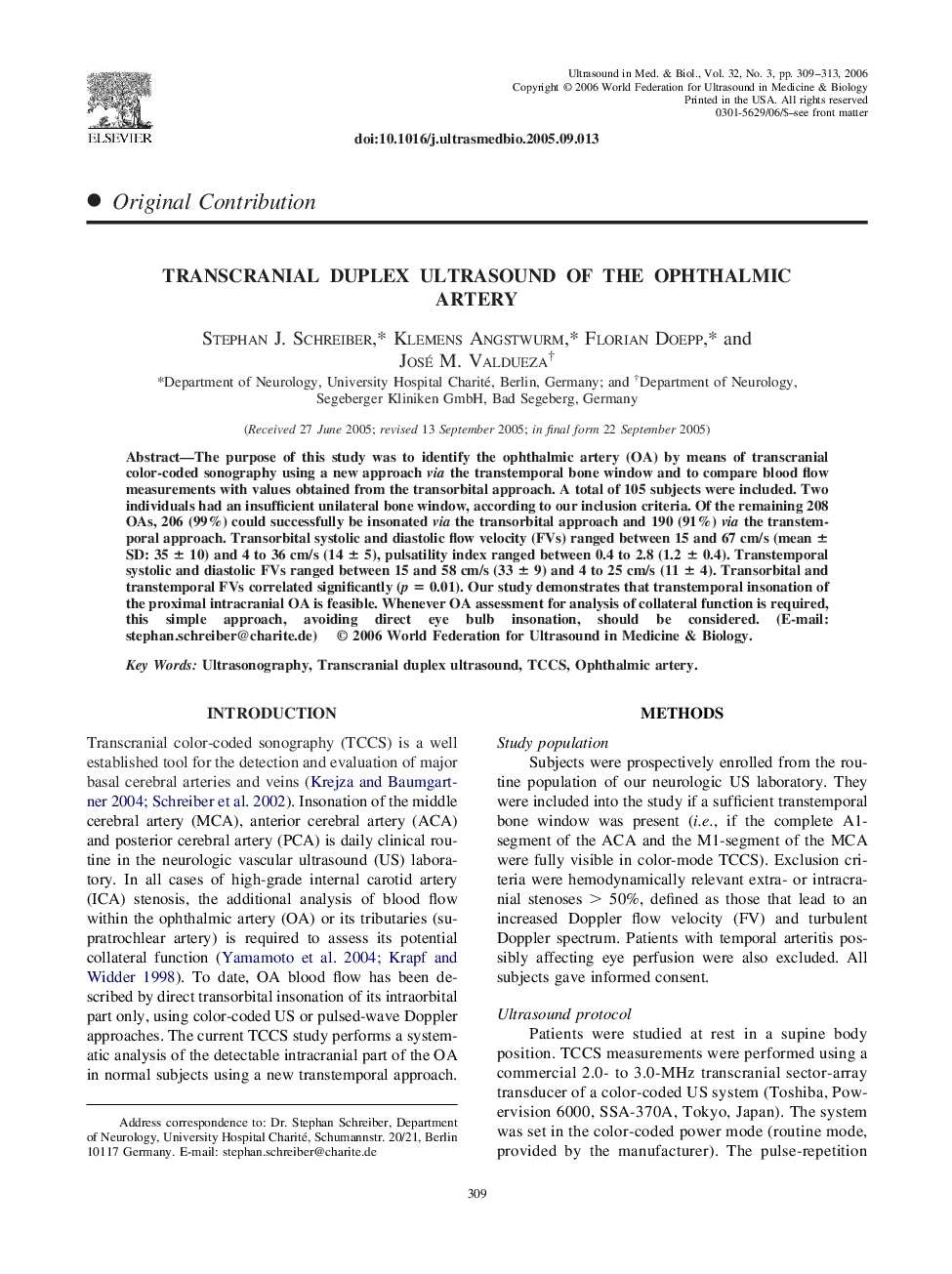| Article ID | Journal | Published Year | Pages | File Type |
|---|---|---|---|---|
| 1761432 | Ultrasound in Medicine & Biology | 2006 | 5 Pages |
Abstract
The purpose of this study was to identify the ophthalmic artery (OA) by means of transcranial color-coded sonography using a new approach via the transtemporal bone window and to compare blood flow measurements with values obtained from the transorbital approach. A total of 105 subjects were included. Two individuals had an insufficient unilateral bone window, according to our inclusion criteria. Of the remaining 208 OAs, 206 (99%) could successfully be insonated via the transorbital approach and 190 (91%) via the transtemporal approach. Transorbital systolic and diastolic flow velocity (FVs) ranged between 15 and 67 cm/s (mean ± SD: 35 ± 10) and 4 to 36 cm/s (14 ± 5), pulsatility index ranged between 0.4 to 2.8 (1.2 ± 0.4). Transtemporal systolic and diastolic FVs ranged between 15 and 58 cm/s (33 ± 9) and 4 to 25 cm/s (11 ± 4). Transorbital and transtemporal FVs correlated significantly (p = 0.01). Our study demonstrates that transtemporal insonation of the proximal intracranial OA is feasible. Whenever OA assessment for analysis of collateral function is required, this simple approach, avoiding direct eye bulb insonation, should be considered. (E-mail: stephan.schreiber@charite.de)
Keywords
Related Topics
Physical Sciences and Engineering
Physics and Astronomy
Acoustics and Ultrasonics
Authors
Stephan J. Schreiber, Klemens Angstwurm, Florian Doepp, José M. Valdueza,
